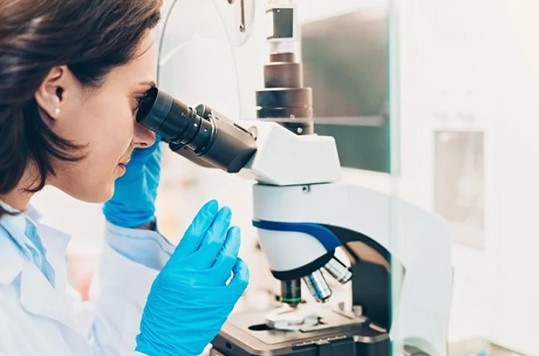PGT Testing: Genetically Screening Embryos for Surrogacy
Genetic testing, specifically Preimplantation Genetic Testing (PGT), has emerged as a tool within the realm of IVF and surrogacy. As surrogacy is an extremely costly and emotional endeavor, medical and legal professionals work diligently to ensure a successful journey and experience for all parties. PGT testing can be a part of that tool box.
PGT refers to a set of advanced techniques that allow for the screening and selection of embryos with the most optimal genetic makeup. This testing can provide valuable insights into the genetic health of embryos before they are implanted into a surrogate’s uterus. PGT is primarily employed to identify genetic abnormalities and select embryos with the best chance of resulting in a healthy pregnancy. There are two main types of PGT: PGT-A (Aneuploidy testing) and PGT-M (Monogenic or single-gene disorder testing).
PGT-A (Aneuploidy Testing):
Aneuploidy refers to an abnormal number of chromosomes in an embryo. PGT-A aims to identify embryos with an incorrect number of chromosomes, which can lead to developmental abnormalities or failure to implant. The process involves the following steps:
- Embryo Biopsy: After fertilization and a few days of development, when the embryo is at the blastocyst stage (comprising about 100 cells), a small number of cells are carefully removed from the outer layer of the embryo called the trophectoderm.
- DNA Amplification: The extracted cells’ DNA is amplified to obtain sufficient genetic material for analysis.
- Genetic Analysis: The amplified DNA is then subjected to various genetic analysis techniques, such as microarray analysis or next-generation sequencing. This analysis determines the number of chromosomes in each embryo, identifying aneuploidies.
- Embryo Selection: Based on the genetic analysis, embryos with the correct number of chromosomes are identified for transfer to the uterus.
PGT-M (Monogenic Disorder Testing):
PGT-M is used when individuals or couples carry a known genetic mutation that could lead to a specific inherited disorder. The process involves the following steps:
- Genetic Mutation Identification: The genetic mutation associated with the disorder is identified in the prospective parents.
- Embryo Biopsy: Similar to PGT-A, a few cells are removed from the embryo at the blastocyst stage.
- DNA Amplification: The DNA from the biopsied cells is amplified for analysis.
- Mutation Analysis: Techniques like polymerase chain reaction (PCR) are used to determine whether the embryos carry the specific genetic mutation.
- Embryo Selection: Embryos without the identified genetic mutation are selected for transfer.
Genetic abnormalities can lead to various medical conditions, developmental disorders, and miscarriages. PGT can identify aneuploidies (abnormal chromosome numbers) and single-gene disorders, allowing prospective parents to make informed decisions about which embryos to transfer and potentially avoid passing on harmful genetic conditions to their offspring.
PGT can enhance the success rates of surrogacy, especially in Intended Mothers over the age of 37 using their own eggs. By selecting embryos with a normal chromosomal composition, the chances of successful implantation and a healthy pregnancy are increased. Embryos with genetic abnormalities are less likely to implant properly or result in a successful pregnancy, making genetic testing a vital tool in improving the overall success rate with surrogacy.
Couples who are carriers of certain genetic diseases, such as cystic fibrosis or sickle cell anemia, may consider PGT to reduce the risk of passing these disorders to their children. PGT can identify embryos that are unaffected by these genetic conditions, allowing couples to make more informed decisions about which embryos to transfer and increasing the chances of having a healthy child. Surrogacy is an increasingly common option for Intended Parents with certain types of genetic disabilities.
Undergoing surrogacy is emotionally and financially demanding. Genetic testing can help minimize the emotional burden by providing couples with the knowledge that they are selecting embryos with a higher likelihood of leading to successful pregnancies. Additionally, the cost of raising a child with a genetic disorder can be substantial, both emotionally and financially. PGT can help alleviate some of these burdens by increasing the chances of having a healthy child.
While genetic testing offers numerous benefits, there are also ethical considerations to keep in mind. Some individuals may have concerns about the potential for selecting embryos based on non-health-related traits, such as physical appearance. Striking a balance between using genetic testing for medical purposes and avoiding the slippery slope of designer babies is a critical ethical discussion within the field.
Genetic testing provides prospective parents with valuable information that enables them to make informed decisions about their family planning. Armed with knowledge about the genetic health of their embryos, couples can decide whether to proceed with surrogacy, delay the process, or explore other options.
As genetic testing technology continues to advance, the scope of information provided by PGT will likely expand. This could include insights into complex genetic traits and susceptibilities to certain diseases. The ability to harness this information could revolutionize family planning by allowing individuals to not only have healthier children but also make informed choices about their own health based on their genetic predispositions.
PGT Process Challenges and Considerations:
PGT is a highly complex and delicate procedure that requires skilled embryologists and geneticists. There are some challenges and considerations to keep in mind:
- False Positives/Negatives: PGT is not infallible, and there is a small possibility of false positives or negatives. Some embryos may be misclassified due to technical limitations.
- Mosaicism: Embryos can exhibit mosaicism, where different cells within the same embryo have different genetic compositions. This can complicate the accuracy of PGT results.
- Ethical Considerations: As mentioned earlier, there are ethical discussions surrounding the use of PGT for non-medical traits or the potential for selecting embryos based on certain traits.
PGT involves advanced genetic analysis techniques applied to cells biopsied from embryos during IVF and surrogacy. It is used to identify aneuploidies or specific genetic mutations associated with disorders. PGT enhances the chances of successful pregnancies by selecting embryos with the best genetic health, but it also comes with technical challenges and ethical considerations that should be carefully considered.
Despite some limitations, PGT-tested embryos offer a range of advantages that make them a preferred choice in many surrogacy arrangements. These advantages include increased pregnancy success rates, mitigation of genetic risks, ethical considerations, and cost and emotional savings. By selecting genetically healthy embryos for a surrogacy journey, there can be a higher potential of a more positive and successful experience for all parties involved.
It’s important to note that a gestational carrier, or surrogate, does not pass along her own genes to a child in gestational surrogacy. The genetic makeup of the child is determined by the Intended Parents or donors who provide the egg and sperm used to create the embryo. The surrogate’s role is to provide a supportive environment for the pregnancy and birth, but she does not contribute her own genetic material to the child being carried.
Embryo Freezing and PGT Testing:
Those who want to have PGT tests performed must freeze their embryos first.
There are several medical and practical reasons for this:
Timing and Synchronization: In a standard IVF cycle, embryos are created, and one or more are selected for transfer to the uterus. However, the process of genetic testing takes time, and waiting for the test results may not synchronize well with the optimal timing of the uterine lining for implantation. Freezing the embryos allows for more flexibility in coordinating the transfer with the test results.
Genetic Analysis Time: PGT involves the removal of a few cells from the embryo for genetic analysis. This process takes time, typically a few days. Freezing the embryos after their creation allows the necessary time for the genetic analysis without affecting the embryos’ developmental stage.
More Comprehensive Testing: By freezing embryos and allowing them to develop further, more cells can be obtained for testing, which can improve the accuracy and reliability of the genetic analysis. Having more cells available reduces the risk of obtaining inconclusive or unreliable results due to insufficient genetic material.
Fresh embryo transfer with PGT is extremely challenging due to the tight timing constraints, the risk of compromising embryo viability, and potential limitations in obtaining accurate and reliable genetic analysis results.
FAQ: Genetic Testing and Surrogacy
What is Preimplantation Genetic Testing (PGT), and how is it utilized in IVF and surrogacy?
PGT refers to advanced techniques used during IVF and surrogacy to screen and select embryos with optimal genetic makeup. It helps identify genetic abnormalities and offers insights into the embryos’ genetic health before they are implanted into a surrogate’s uterus. PGT is primarily used to improve the chances of a healthy pregnancy by selecting embryos with correct chromosome numbers and genetic characteristics.
What are the main types of PGT, and how do they work?
There are two primary types of PGT: PGT-A (Aneuploidy testing) and PGT-M (Monogenic disorder testing).
PGT-A detects embryos with abnormal chromosome numbers (aneuploidies), which can lead to developmental issues or failed implantation. After embryo biopsy, DNA is amplified and analyzed using techniques like microarray or next-generation sequencing. Embryos with the correct number of chromosomes are selected for transfer.
PGT-M is used when intended parents carry specific genetic mutations linked to inherited disorders. It helps identify embryos unaffected by these mutations, reducing the risk of passing on genetic disorders to the child. By selecting embryos without the identified genetic mutation, the chances of a healthier child are increased.
How does PGT enhance the success rates of surrogacy?
PGT increases pregnancy success rates by selecting embryos with a normal chromosomal composition. This improves the likelihood of successful implantation and a healthy pregnancy. Identifying and avoiding embryos with genetic abnormalities decreases the chances of miscarriages and failed pregnancies.
Why are PGT-tested embryos often preferred in surrogacy?
Using PGT-tested embryos in surrogacy provides a greater assurance of genetic health for the child and a viable pregnancy. Intended parents can make informed decisions about embryo transfer based on genetic information, enhancing the overall surrogacy experience and outcome.
Are there any challenges associated with PGT testing?
PGT is a complex procedure requiring skilled professionals. Challenges include false positives/negatives, mosaicism (mixed genetic composition within embryos), and ethical considerations related to non-medical traits.
Why must embryos be frozen before PGT testing?
Embryos are frozen before PGT testing to allow time for genetic analysis without affecting embryo development. It provides more flexibility in coordinating embryo transfer with the test results and allows for more comprehensive testing.











